Deloitte AI Institute
The metaverse is here
AI could be the mastermind. Are you ready for a transformation?
Metaverse technology and the next evolution of the Internet
The metaverse is considered the next evolution of the Internet. It will likely evolve into a series of public and private digital platforms that can enhance the real world in increasingly sophisticated and valuable ways. Web 3.0 is a driver—a convergence of multiple technologies such as artificial intelligence (AI), Internet of Things (IoT), 5G, and blockchain—that could open a world of possibilities and inspiring innovation.
You may immediately think of gaming, consumer interactions at stadiums, and new retail experiences when you think of metaverse, but enterprises and governments can also create virtual worlds. For example, immersive simulations of physical environments can be made hyper-realistic and physically accurate. Humans, robots, and AI agents can work together to plan, design, and test—accelerating innovation and development cycles for a variety of business and community needs. Can you imagine testing new product features to ensure they work before the product is even released? Well, consider this: Immersive simulation could be used to simulate the ergonomics of automobile console design. Are knobs or touch points on the console easy to use while driving? Can everything be accessed safely in a dark interior? Immersive simulation can test for all these issues, and more, and could lead to a more well-designed product before it ever hits the market.
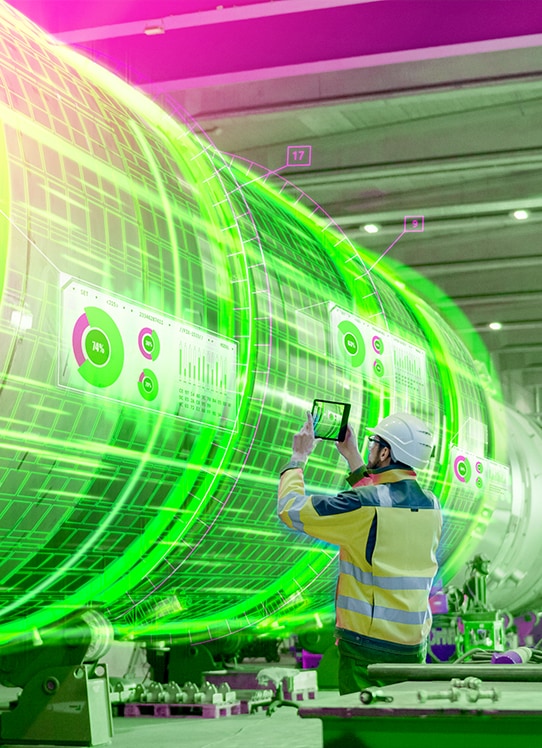
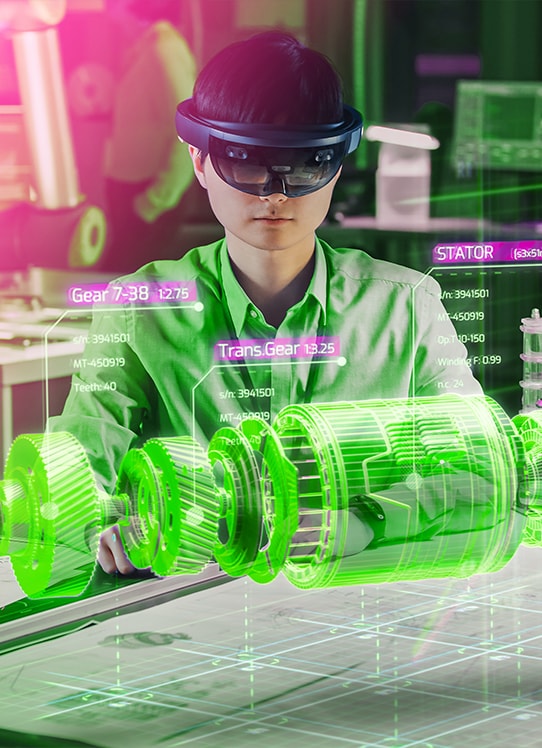
Creating a living replica with immersive simulation
Immersive simulation uses innovative technology for business and government applications, which can change the game for how we work and learn. These simulations, or digital twins, mirror the physical world as we know it. By perfecting actions in a digital environment, we may be able to remove cycles of prototyping and testing to help organizations and government make more informed and efficient decisions. It could take “practice makes perfect” to a whole new level.
Not only can these new approaches create value for organizations, but they could also create entirely new revenue streams, which could indeed disrupt status quo companies. It's a new paradigm, an Unlimited Reality™. Who wouldn't like to be the inventor of the next disrupter?
How it works
Immersive simulation can help streamline and enhance the design process as in the case with the car, potentially creating time and space for more design iterations and speed to production by removing cycles of prototype testing. The next generation of immersive simulation may help engineers identify potential manufacturing, quality, and durability issues—all before the designs are finalized. Today, it can be used to explore space, optimize manufacturing systems, generate renewable energy more effectively, and even undertake patient surgery more safely.
At the Scripps Clinic in California, surgeons are using a new mixed reality headset that gives them a 3D holographic view of a patient’s surgical plan. The technology lets doctors superimpose the 3D surgery plan over the patient’s anatomy so they can replicate it more easily.
In manufacturing, maintenance, and warehouses, workers could achieve significant efficiency gains through IoT and augmented reality tools. And cities are creating entire 3D replicas of themselves, helping to improve decision-making and transportation scenario-planning.
Scenario planning is also likely to be part of the Department of Defense's push into advanced digital and artificial intelligence capabilities— the Pentagon recently hired its first chief digital and AI officer. The goal appears to be to fast track the development of AI capabilities that can be used by U.S. forces from the Pentagon to the battlefield. In the world of sports, the New York Mets baseball team recently bought an AI-based pitching machine that analyzes MLB ball-tracking data to replicate the delivery and pitches of any pitcher inputted into its system.
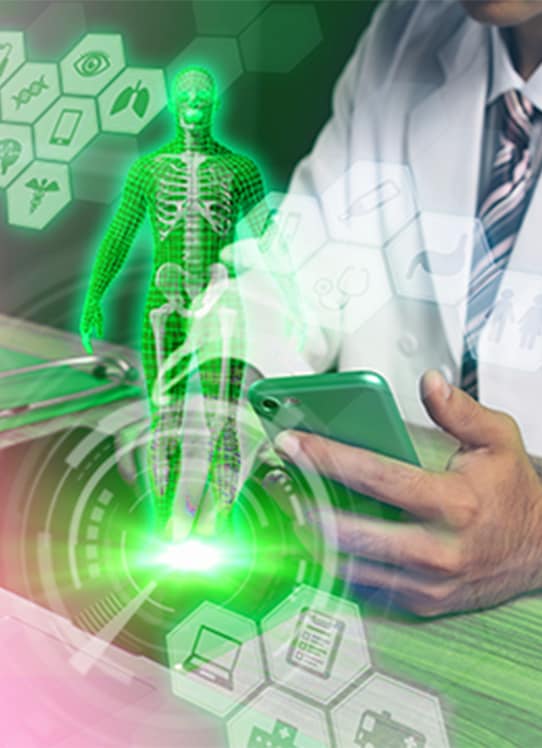
Take a look at the future
The internet is going 3D with new, center-stage experiences
Imagine gaming engines intersecting with signature business issues like training technicians, creating customer experiences, and supporting decision-making. In fact, many of the world's premier gaming engines are already servicing corporate entities. For example, NVIDIA is entering the Edge AI market, which could enable more immediate, even life-saving, actions in the field. London-based, Proximie is leveraging NVIDIA products to build a telepresence platform for real-time, remote surgical collaboration.
New devices could change our daily interactions
Through next-generation interfaces—for example, smart glasses or voice—it is expected that we will be able to interact with contextual, real-time information that has been called up by intuitive and sensory triggers such as geolocation, computer vision, and voice, gesture, or biometric commands. Augmented Reality and Virtual Reality (AR/VR) devices are expected to be a primary gateway for humans to access new types of platforms, ranging from AR glasses or digital contact lenses to haptic wearables and sensors. Artificial intelligence and machine learning (AI/ML) are expected to play a foundational role in Web 3.0 computation.
Digital twins should get better in 3D and proliferate
In a digital environment, sensors and 3D maps can help to create a twin image of many objects in many places. Today, this type of digital information is primarily accessed via screens and dashboards. In the future, the twin may pop up in the middle of a conference room table so people can see the effects of different scenarios live. Digital twins can also identify the best way to carry out operational or emergency tasks—anything requiring significant capital expenditure or risk to human life could be more cost effectively and safely simulated and tested via a digital twin.
Early consumer simulations could inspire organizational ones
It's easy to imagine how digital worlds and real worlds can have mega impact in the world of sports. Digital experiences for fans are already getting innovative. In collaboration with US Golf Association, Deloitte created an augmented reality experience that immersed fans in the 2021 US Open and US Women's Open in ways previously unimaginable.
Off the course, such possibilities with new tech can address signature business issues such as employee training. Take service or fleet technicians for example. Training them is often time consuming. But, if technicians could start with virtual reality training that lets them see the systems they are working in 3D and guides them through the repairs in a gaming-like environment, training time could be cut.

Today is the perfect time to collaborate and experiment
For example, consider how meetings might change. Imagine moving around an office from room to room via your own virtual avatar, passing other colleagues' avatars in the halls or interacting with colleagues from across the globe in a digital meeting space. These are all new opportunities for design, workflow, and immersive collaboration. Younger employees who are often naturally more comfortable in these environments will likely gravitate toward them, making them a potential recruiting magnet down the road.
Meeting and collaborating in a virtual world is one thing, but what about designing products and workflows to deliver better goods and services using a virtual 3D environment? We'd like to introduce you to a few friends of ours. If you haven't met Deloitte's virtual rubber ducks, take a look. These virtual rubber ducks can help illustrate the ways factories of the future are working today. The Virtual Factory Duck App lets you change product features, test them to increase performance, and alter production specs before a single duck is made. AI is fueling a lot of the capabilities—and, this isn't just imaginary; it's already operational, it's real.
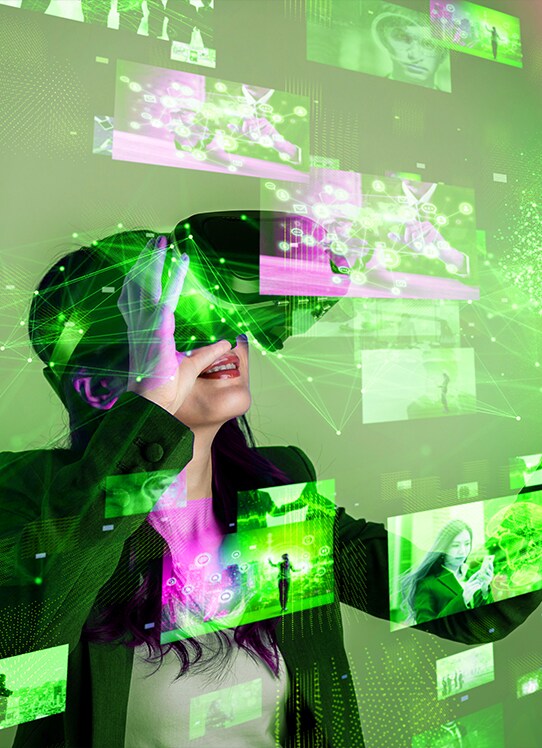
Can immersive simulation really make organizations smarter? In some cases, they already are ...
Factories
At one global shipping company, a pilot project incorporated IoT sensors to help predict maintenance failures before they happened and ensure reliable, on-time deliveries. By leveraging IoT and edge computing, Deloitte was able to help the company reduce unplanned downtime by identifying likely machine failures before they occurred. The impact: Once scaled up, this client should unlock 5% of capacity across nearly 50 automated facilities and save nearly $100 million annually. With maintenance issues minimized, they can provide better service to customers, despite the pandemic and labor shortages. This is metaverse technology in action and organizations are experimenting with it at Deloitte's Smart Factory @ Wichita today.
Government agencies
A government agency in Australia is working with Deloitte on a first-of-its-kind immersive application based on simulation techniques pioneered in Formula One racing. Optimal Reality predicts and responds to traffic patterns using real-time data and AI-driven tools to reveal solutions too complex for humans to see on their own and underpins next-gen traffic management. Faster-than-real-time analytics calculate network metrics and predict network conditions to support proactive decision-making in seconds for optimizing traffic signals, prioritizing buses through congested roads, alerting customers to network disruptions, or monitoring emissions, which may be critical given the environmental impact of transport.
Autonomous cars
Immersive simulation is being used to help train autonomous cars, helping make cars safer and more reliable, while speeding up the learning process for autonomous vehicles. It's a continuation of the partnership with Formula One racing on pioneering simulation techniques that allow users to set up scenarios in the digital world to more safely and quickly test how cars react in various circumstances.

Get started
So, what does all this mean? It's about new ways to combine people and machines—in a collaborative, human-centered way, one that improves the way people work, live, and learn.
It's the promise of all this new tech that's fueling the metaverse. While its capabilities could delight consumers, its value to business is already proving significant.
All it takes is imagination and technical know-how, and your organization can transform into its next natural evolution.
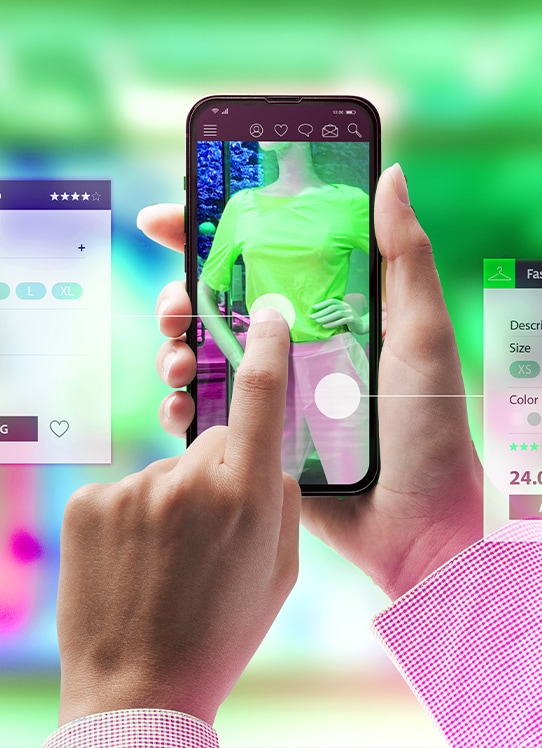
Get in touch
Let's talk
Insert Custom CSS fragment. Do not delete! This box/component contains code needed on this page. This message will not be visible when page is activated.
+++ DO NOT USE THIS FRAGMENT WITHOUT EXPLICIT APPROVAL FROM THE CREATIVE STUDIO DEVELOPMENT TEAM +++
